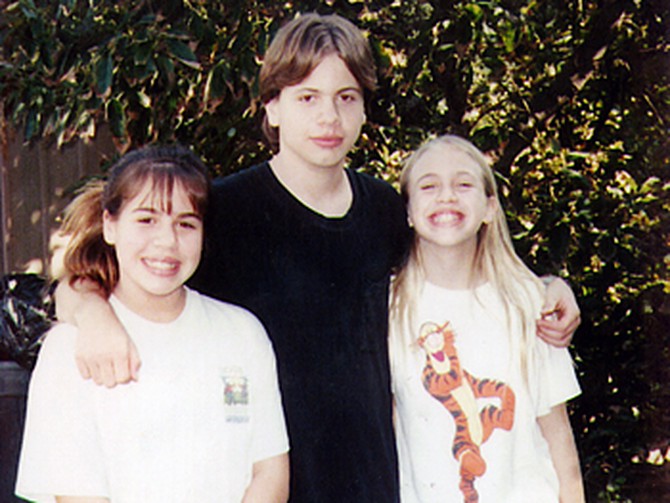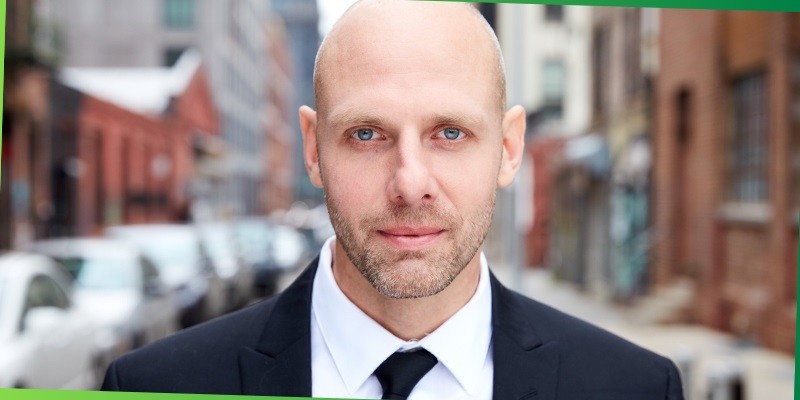Michael Crowe was once a name in headlines, linked to a mystery. The question of what happened to him still intrigues many.
Michael Crowe’s story is not just about a single event. It involves twists, turns, and a deep dive into the justice system. Crowe was a teenager when his life took a dramatic turn. Accusations and investigations put him in the spotlight.
The case surrounding him raised questions about innocence and guilt. His journey shows how assumptions can lead to unexpected outcomes. It’s a tale of resilience, challenging perceptions, and finding truth. This blog explores the events and aftermath, shedding light on a complex narrative. Understanding his story offers insight into the impact of media and justice on individuals.
The Case Overview
Michael Crowe faced intense scrutiny after his sister’s tragic murder. Initially charged, he was later exonerated. The case highlighted issues in interrogation practices and led to legal reforms.
### The Case Overview
The story of Michael Crowe is both chilling and eye-opening. It raises critical questions about justice and the system meant to protect us. You may wonder how a young teenager became embroiled in a high-profile criminal case.
The incident attracted national attention, leaving many questioning the methods used by law enforcement. It serves as a cautionary tale about the complexities of the legal process.
Let’s dive into the specifics of what happened, so you can better understand this compelling case.
Initial Incident
It all began on January 21, 1998, in Escondido, California. The Crowe family faced an unimaginable tragedy when 12-year-old Stephanie Crowe was found murdered in her bedroom. The community was shocked, and the search for her killer began immediately.
The police quickly focused on Stephanie’s brother, 14-year-old Michael Crowe. The pressure to solve the case fast was intense, leading to a series of controversial decisions.
The initial interrogation of Michael was long and grueling. Under significant stress, Michael made incriminating statements, which he later recanted.
Key People Involved
Michael Crowe, just a teenager at the time, found himself at the center of a legal storm. His life changed overnight, from a high school student to a suspect in a murder investigation.
Stephanie Crowe, the victim, is not just a name in the case. Her tragic death is the catalyst that set off the chain of events.
The police detectives involved in the case faced scrutiny for their interrogation techniques. Their methods raised ethical concerns and became a focal point of criticism.
A neighbor, Richard Tuite, also became a significant figure. Initially overlooked, he was later tried and convicted of Stephanie’s murder years after the initial investigation.
This case teaches us about the importance of questioning authority and the need for fair treatment under the law. Have you ever considered how easily someone could be wrongfully accused in a high-pressure situation?

Credit: www.oprah.com
Investigation Process
The investigation process in Michael Crowe’s case was intense and deeply scrutinized. It involved a series of steps that challenged both the investigators and the family. Understanding this process can offer insights into how justice is pursued and the complexities involved in such sensitive cases.
Police Interrogation
Michael Crowe, a young teenager at the time, faced grueling police interrogations. The process was rigorous, with officers pushing for a confession. Imagine being questioned for hours, feeling confused and scared. This was Michael’s reality, highlighting the pressures of police tactics.
Interrogations can often lead to false confessions, especially under stress. In Michael’s case, the intensity of the questioning came under criticism. It raised questions about the fairness and effectiveness of police methods.
Evidence Collection
Gathering evidence is crucial in any investigation. In Michael Crowe’s case, the initial focus was heavily on him, potentially overlooking other leads. Evidence collection must be thorough and unbiased to ensure justice.
During the investigation, physical evidence from the crime scene needed careful analysis. The importance of maintaining integrity in handling evidence cannot be overstated. Any lapse could lead to wrongful conclusions.
What happens when evidence isn’t properly gathered? It can lead to mistrust in the justice system. Michael’s case serves as a reminder of the need for meticulous and transparent evidence collection. Are the processes in place today truly sufficient to prevent such oversights?
Legal Proceedings
The legal proceedings surrounding Michael Crowe’s case have sparked widespread interest, capturing attention with its twists and turns. From the initial courtroom drama to the appeals that followed, each phase of the legal journey offers lessons in justice and perseverance. If you’ve ever wondered how the legal system can shape someone’s life, this story provides a compelling narrative.
Court Trials
Michael Crowe’s court trials were intense and emotional. They were marked by pivotal moments that had spectators on the edge of their seats. Each witness brought new revelations, challenging perceptions and unveiling the complexities of the case.
During these trials, the defense and prosecution presented their arguments with vigor. You could sense the tension in the room as evidence was scrutinized and testimonies were dissected. The stakes were incredibly high, not just for Michael but for all involved.
Imagine sitting in a courtroom, feeling the weight of every word spoken. It’s a reminder of how crucial every detail can be in shaping a person’s fate. Have you ever thought about how much rides on the skill of legal teams?
Verdicts And Appeals
The verdicts were a turning point in Michael Crowe’s journey. They reflected the culmination of countless hours spent in the courtroom. With each decision, hopes were either dashed or renewed.
Appeals soon followed, showcasing the persistence inherent in the legal process. They provided a chance for reevaluation and potential redemption. Every appeal was a testament to the belief that justice must be pursued relentlessly.
The legal proceedings highlighted the importance of tenacity and the pursuit of truth. It raises a vital question: how far would you go to seek justice for yourself or a loved one?
As you think about these trials and appeals, consider the impact of every legal decision. What would you do if faced with a similar situation?
Michael Crowe’s case serves as a powerful reminder of the complexities of the legal system. It’s a story that asks you to reflect on the balance between law and humanity.

Credit: www.youtube.com
Public Reaction
Curiosity surrounds Michael Crowe’s story, sparking public interest and emotions. His experience in the justice system led many to question fairness and truth. The case remains a topic of discussion, highlighting the impact of public perception on legal outcomes.
Public reaction to Michael Crowe’s story has been a whirlwind of emotions and opinions. It’s a reminder of how quickly public perception can shift. What does this say about us as a society?
Media Coverage
The media played a pivotal role in shaping public opinion about Michael Crowe. Headlines were filled with bold accusations and sensational stories. How did you perceive the news coverage? Did it leave you questioning the truth?
News outlets often focus on dramatic elements, sometimes overlooking facts in the rush to be first. The constant coverage and analysis can sway public sentiment dramatically. Have you ever felt swayed by media narratives?
Community Response
Within the community, reactions varied significantly. Some people expressed outrage, while others urged for a fair trial. How does your community react in times of crisis?
Community rallies and support groups sprung up quickly, showcasing the power of collective action. This unity can often lead to positive change. Are you inspired by community efforts?
In both media and community reactions, one thing is clear: everyone has a voice. It’s crucial to listen and engage thoughtfully. How do you choose to express your opinions in such situations?

Credit: www.kpbs.org
Frequently Asked Questions
What Was The Outcome Of The Michael Crowe Interrogation?
Michael Crowe’s interrogation led to a false confession. DNA evidence later cleared him of his sister’s murder. He was wrongfully accused, highlighting issues in police interrogation techniques. His case prompted changes in juvenile interrogation laws. Crowe’s experience underscores the importance of accurate and fair investigation processes.
What Does Michael Crowe Do For A Living?
Michael Crowe works as a television news reporter. He specializes in delivering current events and stories to viewers. His role involves investigating, researching, and presenting news in an engaging manner. Crowe is known for his clear communication and ability to connect with the audience.
Who Were The Detectives Who Interrogated Michael Crowe?
Detectives Mark Wrisley and Chris McDonough interrogated Michael Crowe. They were involved in the investigation of Stephanie Crowe’s murder.
Is The Interrogation Of Michael Crowe A Good Movie?
“The Interrogation of Michael Crowe” is a gripping drama based on true events. It received positive reviews for its intense storytelling and strong performances. Viewers appreciate its realistic portrayal of psychological pressure during police interrogations. It is worth watching for those interested in true crime and legal dramas.
Who Is Michael Crowe?
Michael Crowe was a teenager wrongfully accused in a murder case. His story drew widespread attention.
Conclusion
Michael Crowe’s story is both surprising and emotional. His journey through suspicion and legal challenges leaves a lasting impact. Understanding his experience reminds us of the importance of justice. It also highlights the need for compassion and truth. Each twist in his case teaches valuable lessons.
Society must strive for fairness and accuracy. Misunderstandings and false accusations can deeply affect lives. Crowe’s experience is a call to action. Let’s learn and grow from his story. Ensure justice for all individuals. His case encourages us to reflect and improve our systems.
Always seek the truth.
Last Updated on July 6, 2025 by Marjorie R. Rogers, MA (English), Certified Consultant



